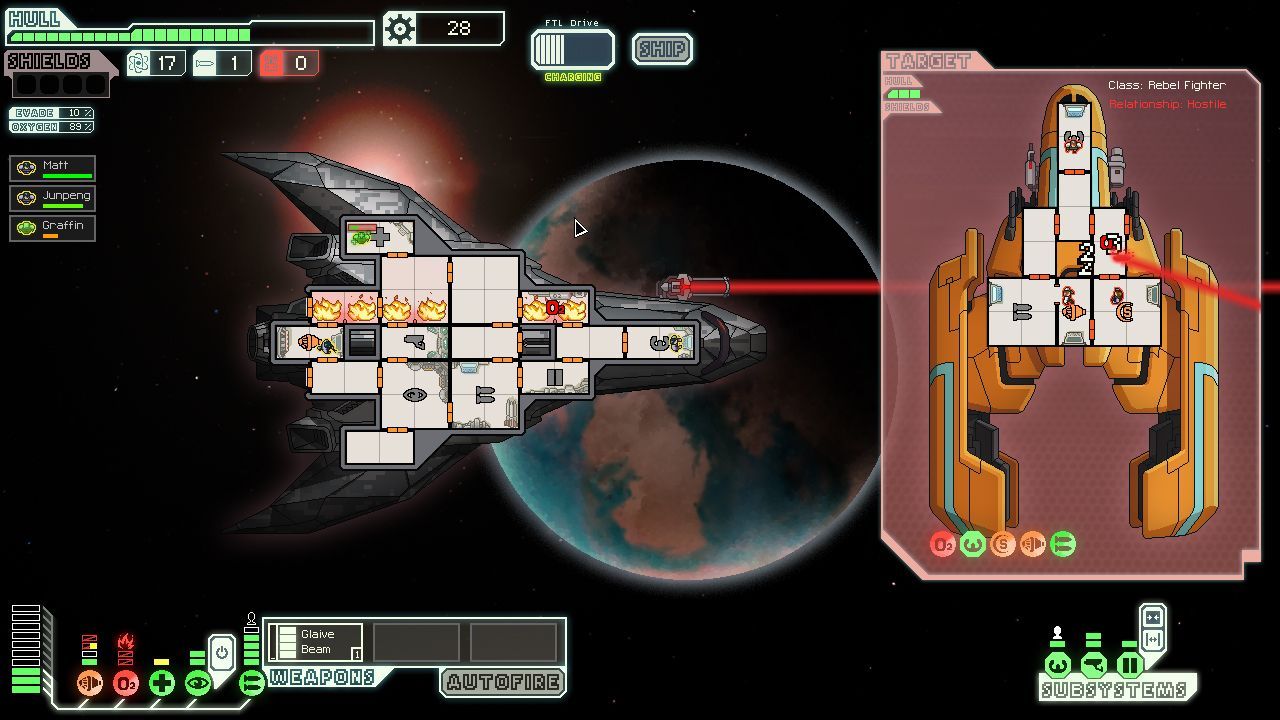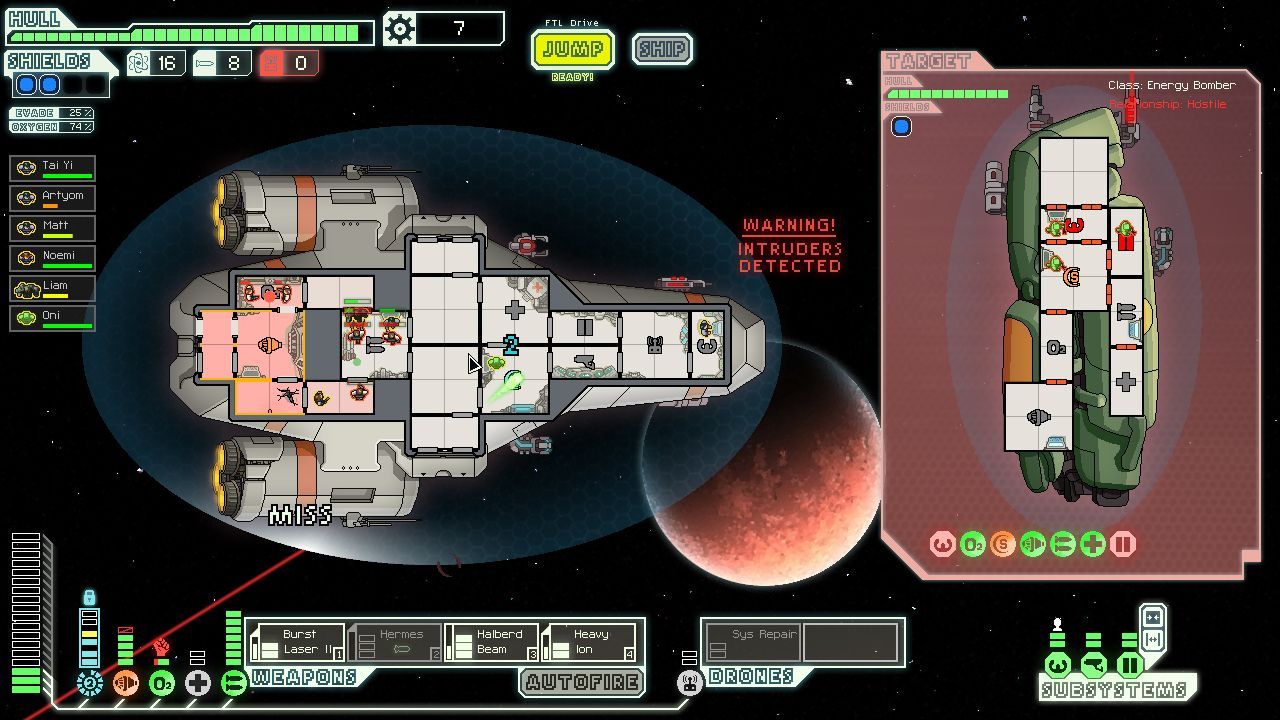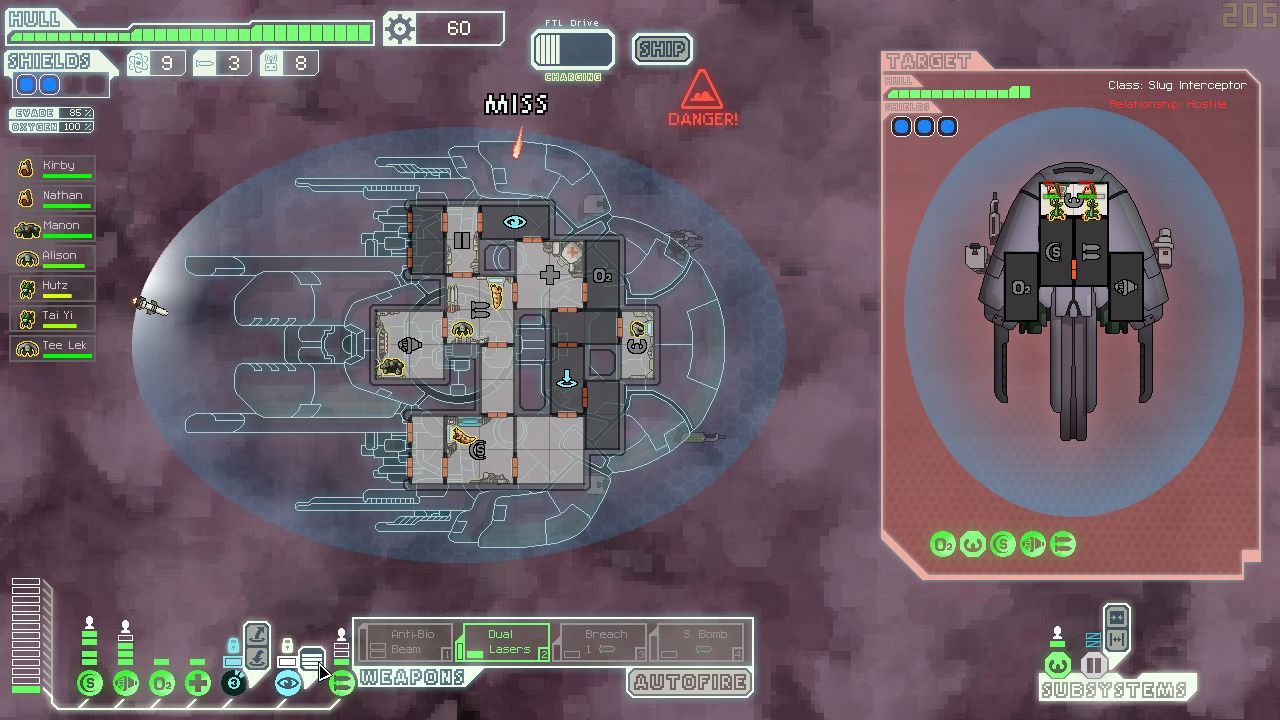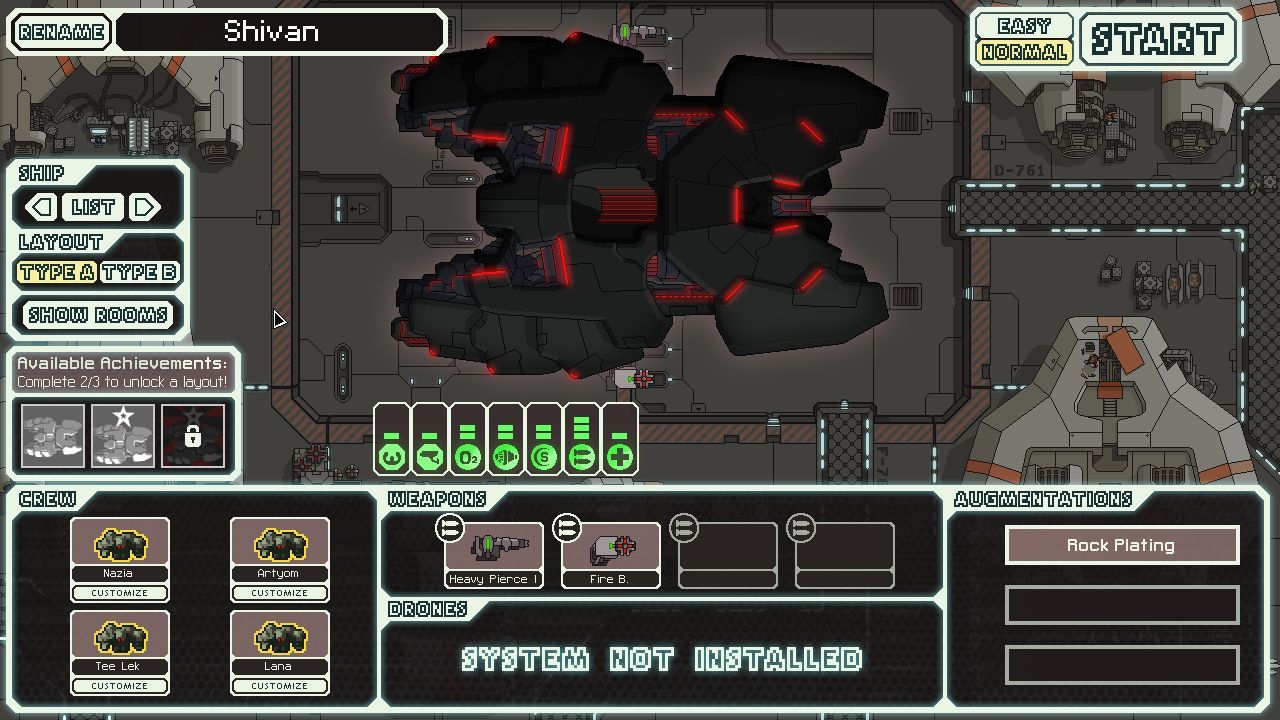Faster Than Light Review
Here’s an uncomfortable truth that gamers learn after a while: most third-person depictions of strategic combat just don’t pay off when they’re implemented into a gaming system. That’s why action combat games are based on combos, RPG weapons have cooldown times, and our RTS structures build soldiers as if they popped from an assembly line: a mouse and keyboard are poor tools for recruiting civilians from the streets or carefully placing your sword thrust past your opponent’s parry. As a gamer, one quickly learns that the novelty of “realism” in gameplay fades after about five seconds if the mechanic isn’t smoothly integrated. Maybe it’s “Your soldiers run out of ammo, just like in the movies, get it?” or “You have to sharpen your sword every night, just like in the books, get it?”, but one way or the other if you build a video game around iconic “mechanics” from other media, it’s the rare one that pays off.

That’s why Faster Than Light had such a big challenge ahead of it. As a successful Kickstarter project, Faster Than Light promised to build a spaceship combat simulator that finally realized all those classic elements from, well, every science fiction story ever. Star Trek, Star Wars, Stargate, you name it: the ships are all a variation on a theme. We all know that the ship has shields, weapons systems, and crew members that stand dutifully at their stations and do… SOMETHING important (at least, their fingers sure are typing furiously). We all know that you need to hit when your opponent’s shields are down, and sometimes you’ll just need to run like heck and try to dodge the laser bursts. After so many episodes and movies, you’d think that such an intricate combat system would, once codified, make for a great video game.
The good news is that Faster Than Light hit this nail on the head, and with a sledgehammer too. I was honestly surprised at how little time it took before I was routinely “rerouting power from the engines to sustain life support” or “pulling men from repairing the bridge to fight off boarders”. In other words, Faster Than Light perfectly maps the standard dramatic experiences onto gameplay mechanics. Even though the basic format for all encounters is the same (a single ship fighting against a single ship), the utter variety of tactics holds great potential and keeps you coming back for more. Maybe you’ll target the enemy weapon systems to stop their attack, or maybe you’ll try to knock out their engines to prevent them from escaping. If you’re low on hull integrity, maybe you’ll just focus on evasion and shielding, and escape as soon as you can power up your engines. There was the time I had to run my entire crew onto the bridge so I could open the airlock doors to put out all the fires and simultaneously suffocate the enemy boarders. Then there was the time the enemy took out my life support early, and I had to constantly cycle my crewmen between repair duty and the medical bay, letting them gasp for air a little during their work, but healing them up in shifts to finish the job. Needless to say, it was a tense experience.

The encounter battle system is obviously the strong point of the title, and it’s a real beauty, but this means that other areas of the game generally serve just to get you to the core quicker. In game, your ship travels from one end of a stellar map to the other via FTL jumps, with an encounter at most of them. Winning an encounter earns you raw “scrap” (your resource for buying upgrades), and sometimes you’ll also get a special ‘drop’, like a free weapon, or a ship upgrade. Every aspect of the ship that affects your combat can be upgraded: shields, weapons, crewmen, robot drones, life support, you name it. These are all nicely balanced with each other, and you’ll find yourself carefully planning out which areas of the ship are most in need of an upgrade, and which upgrades will play to your strengths. Every part of the ship requires power, of course, but power can be rerouted during battle, so you’ll have to decide whether to upgrade your generator constantly and have all your systems be fully juiced, or to run a little risky and hope to juggle the power where you need it. Outside of the upgrade system, the macro-level gameplay is skimpy at best. Although there is the slightest bit of strategy about choosing your jump paths and watching your fuel supply, for the most part the game is built around grinding. It’s up to the individual player to decide whether this is a failure or a strong point of the game, but I personally would’ve liked to have a break now and then from the constant battling.
The game makes use of classic 16-bit graphic visual style, but we’ve seen so many games opt for this “retro” feel that it’s starting to feel a little overused in this case. It’s a style that works best when going for a feeling of charm, humor, or maybe nostalgia, but Faster Than Light doesn’t really capitalize on any of these aesthetics. With gameplay centered around brutal combat, this title has its fair share of dying crewmen, bloodthirsty slavers, and murderess aliens, but there doesn’t seem to be a unified tone for the game to focus around: is it supposed to be cute, or adventurous, or threatening? In this vein, Faster Than Light also has almost no real world building to speak of, which feels like a missed opportunity. Granted, it’s so easy to lose crewmembers that you can hardly expect a narrative to build up around the game, but even your interactions with the various space factions seems underdeveloped: each faction is essentially reduced to a ship type and attack pattern, without character or conflict, and with quickly-repeating one-line motivations for attacking you or your ship. For an indie game so entirely focused on a unique gameplay experience, a critique about the story and trappings may seem to be nitpicky. However, these are the aspects that can tip a game from ‘good’ to ‘great’: a well-crafted fiction and style can amplify the joy of good gameplay, and in the past decade the indie game market has raised to a new standard in this respect. Perhaps this wouldn’t bother me so much if the makers hadn’t mentioned the cult classic TV series Firefly as one of the inspirations for the game.

The music in the game similarly does not feel particularly inspired, keeping to simple background synth pads and leads, and with something of an underwhelming title theme. It does at least appropriately change the music to suit the situation, fading out ‘combat music’ for ‘safety music’, which always helps emphasize the mood of any game. Overall, considering that the game quickly focuses on (admittedly very well done) grinding gameplay, I think most people will find themselves switching the music off.
Faster Than Light has no multiplayer component, and while a little bit of experience with the game might make the player eager to battle his ship against those of his friends, the game design in general simply isn’t built for multiplayer. To lure people back for replay, Faster Than Light has a lovely ship unlock system that gives you access to new designs and layouts. This is an unlock system done right, because these aren’t merely cosmetic niceties and doodads; since each ship includes a unique set of starting upgrades and capabilities, they can make for very different experiences, and in order to beat the game you’ll need to pick out the ship that best complements your style of gameplay. This system even balances the method of unlock nicely: new ship designs are awarded to you for reaching different hidden objectives or completing surprise side missions, but each design has a unique alternative layout that unlocks after completing two out of three designated achievements. In other words, some unlocks you’ll get as a mystery, and others you can actively chase after.

Faster Than Light is a little bit like a “golden-toe” football player: it only does one thing well, but it does it so well that it overshadows other deficiencies. In Faster Than Light, the developers pushed for rock-solid, beautifully polished gameplay, and they absolutely nailed it. The actual encounter-based combat is among the best of ship-to-ship combat simulators (which is actually a big pond). The rest of the game pales in comparison, but these are just the weaker fighters circling around the flagship feature. If you have a special place in your heart for that captain’s chair on the spaceship’s bridge, you’ll be delighted by this chance to finally test your mettle.
